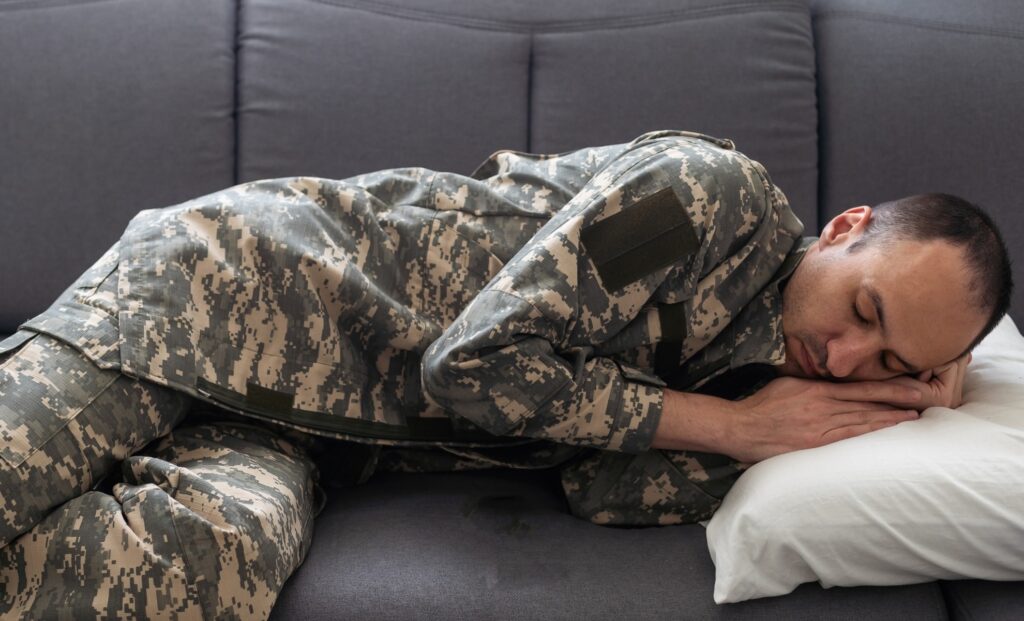The so-called “military sleep method” has resurfaced through fitness influencers and motivational reels, where uniformed figures bark advice through smartphone screens. But is this just social media noise, or does the technique offer something truly useful for civilian sleepers?
The promise is appealing: a no-nonsense, minimal-step approach to falling asleep rapidly. Originating from a 1981 sports performance book titled Relax and Win, the method was designed to help soldiers get rest regardless of their environment. Its recent popularity has reignited interest in whether it can genuinely work for people with less intense lifestyles—and whether it even should.
At a time when sleep issues are on the rise, especially in high-pressure professions and among shift workers, the potential for a simple, practical tool is tantalizing. Yet the method’s military roots raise questions about how transferable it is to the general public. Sleep researchers are now weighing in.
The Three Core Steps of the Technique
The method relies on a trio of techniques familiar to sleep therapists: progressive muscle relaxation, controlled breathing, and mental visualization. In practical terms, that means systematically relaxing your muscles starting from the face, moving down to the arms, chest, and legs, while pairing the process with slow, steady breaths. The final step involves mentally placing yourself in a calming, imagined setting—like lying in a quiet field or floating on still water.
There’s no published scientific research specifically validating the military sleep method. According to ScienceAlert, the method is not formally documented by any defense body in open-access research. Despite that, the technique overlaps significantly with components used in clinically supported treatments for insomnia, such as Cognitive Behavioral Therapy for Insomnia (CBT-I).
Dean J. Miller, a sleep researcher and senior lecturer at CQUniversity Australia, notes that this overlap is telling. In his field work with athletes and military personnel, he’s seen these tools used to help manage fatigue, circadian disruption, and performance pressure. Though not a formal endorsement, it offers a layer of credibility for the method’s components.

Similarities to Cognitive Therapy Practices
CBT-I, widely recognized as the gold standard for treating chronic insomnia, includes five core strategies: cognitive restructuring, stimulus control, sleep restriction, sleep hygiene, and relaxation techniques. The military method mirrors at least three of these, particularly the use of controlled breathing, relaxation, and mental imagery.
CBT-I’s relaxation element often uses techniques nearly identical to those described in the military method. These are designed to lower physiological arousal—an underlying barrier to falling asleep. The military approach, however, condenses them into a short routine focused on what soldiers can control in austere environments.
That said, the method lacks some of the foundational elements of CBT-I, such as long-term habit reprogramming and behavioral conditioning. As a result, while the military version may serve as a helpful quick fix, it isn’t designed as a holistic solution to chronic sleep issues. For civilians, its effectiveness might depend more on context than consistency.
The Myth of the Two-Minute Miracle
Despite the viral headline, expecting to fall asleep in two minutes may be setting the bar unrealistically high. Most civilians with regular schedules tend to fall asleep in ten to twenty minutes. Consistently doing so in under five minutes is often interpreted by experts as a sign of excessive daytime sleepiness, not peak sleep health.
Even for military personnel, the two-minute figure isn’t a standard, guaranteed result. It’s likely a best-case scenario reported anecdotally rather than a reproducible outcome. “For civilians, falling asleep in two minutes is an unrealistic goal,” writes Miller. The pressure to meet that target may even produce anxiety that makes sleep harder to achieve.
Still, the technique may offer value when reframed. Rather than a strict timer-based goal, using the method as a wind-down routine could help reinforce consistency in sleep hygiene. According to Miller, blending it with personalized strategies or professional guidance might offer more sustainable benefits, especially for those navigating shift work, parenting, or sleep disorders.

